51 Types of Cheese, Explained! A Global Gift for Every Palate
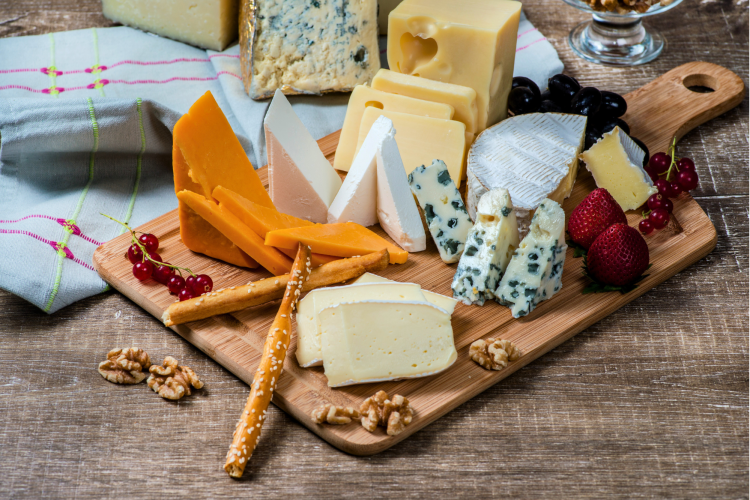
With so many types of cheese available around the world, it’s no surprise that this dairy delight holds a special place in kitchens and on menus everywhere. From soft and creamy to sharp and aged, each variety brings its own unique flavor and texture. Below, we break down the most popular types of cheese to help you navigate the world of cheese with confidence and maybe even walk away with some of the best gifts for chefs in your life.
Jump to Section
Types of Cheese
This types of cheese list will get you acquainted with some of the most beloved types of cheese in the world, including their characteristics and how to enjoy them at their best.
1. Cottage Cheese

Cottage cheese is a soft, mild-tasting cheese made by curdling cow’s milk with an acid like lemon juice or vinegar. Thought to date back to ancient times, it’s simple to make at home and incredibly versatile. Enjoy it plain, spread on toast or pair it with fruit. We've also heard great things about blending it with your scrambled eggs to get more protein without the added fat.
2. Cotija Cheese
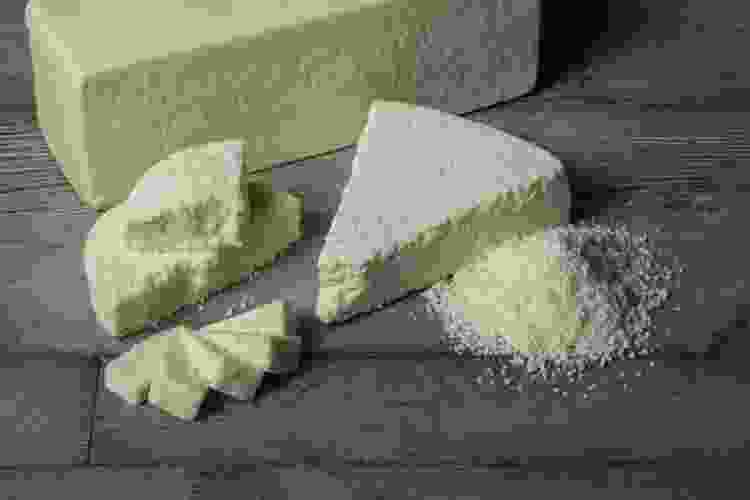
Cotija cheese takes its name from the town of Cotija, which is located in the Michoacan province of Mexico. This fresh cheese, made from cow’s milk, has a distinctly salty flavor and is often crumbled over salads, soups or tacos.
3. Cream Cheese

Cream cheese, first mass-produced by dairyman William A. Lawrence in Chester, New York, is made by blending cream with milk. It’s almost always sold in blocks and has a smooth, mildly tangy flavor. Cream cheese is commonly spread on bagels, often paired with lox and used as a base for dips and spreads.
4. Pimento Cheese

Pimento cheese is an awesome regional cuisine synonymous with Southern food. It’s essentially a spreadable cheese made with sharp cheddar cheese, mayonnaise, pimentos, salt and pepper and it can be as smooth as peanut butter or as chunky as salsa. A sweet red pepper called Pimiento in Spain is the main ingredient in this cheese and people tend to enjoy it with crackers, put it inside celery sticks and even smear it on bread.
5. Gruyère Cheese
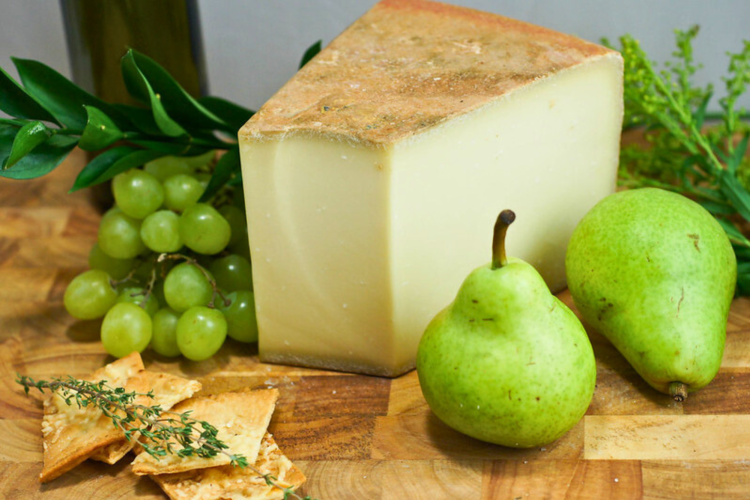
Gruyère cheese comes from the Gruyère region of Switzerland, where it has been made for centuries. It’s a versatile cheese that can be enjoyed on its own, in sandwiches or melted in a fondue. It has this nutty, slightly sweet and earthy flavor that works in a lot of different dishes. However, the longer it is aged, the grainier and sharper Gruyère becomes.
6. Ricotta Cheese

Ricotta is a fresh cheese originating from Southern Italy and it’s made from liquid whey left over after milk is curdled. This soft, delicate cheese is incredibly versatile and can be spread on toast in place of butter and is suitable for both sweet and savory dishes.
7. Blue Cheese
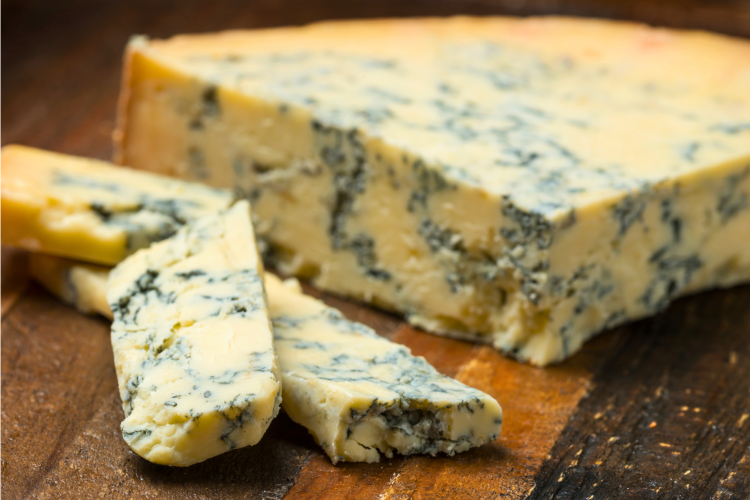
Believed to have originated in the Middle Ages, blue cheese gets its distinctive blue patches and streaks from a specific mold called Penicillium Roqueforti. It comes in a variety of styles, with textures ranging from crumbly to creamy and flavors that go from mild to absolutely pungent. Blue cheese is easy to pair and goes well with sweet, fruity treats like jam or cider. It can be served as an appetizer or even as a dessert.
8. Feta Cheese

Feta cheese is a classic Greek cheese made from a blend of sheep and goat milk, which gives it a creamy texture and a peppery kick compared to cow’s milk cheeses. Some varieties are soft and buttery while others are hard and tangy. Feta pairs amazingly well with almost every traditional Greek dish, including salads, sandwiches, roasted vegetables and grilled meats.
9. Parmesan (Parmigiano) Cheese

Parmesan or Parmigiano Reggiano is a cow’s milk cheese from the area around the villages of Parma and Reggio Emilia in Northern Italy. It’s a hard cheese that’s notoriously crumbly and doesn’t slice at all. To eat it, you have to grate it or break it off in chunks with a specially shaped cheese knife. Parmesan has a sharp and nutty flavor that pairs well with different pastas and pizzas, and can even be enjoyed on its own.
10. Brie Cheese
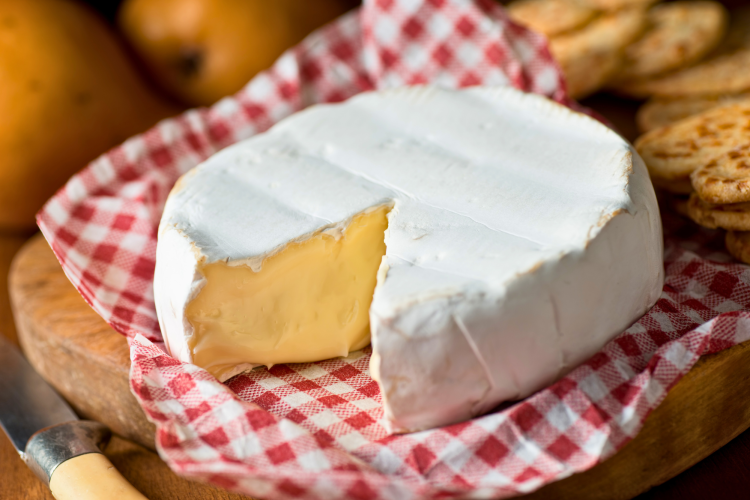
Brie is a classic French cheese originating from the Brie region to the East of Paris. It’s a soft, white cheese with a creamy and buttery flavor that pairs well with baked pastries and it’s considered a great dessert cheese. Also, it’s best enjoyed at room temperature.
11. Burrata Cheese
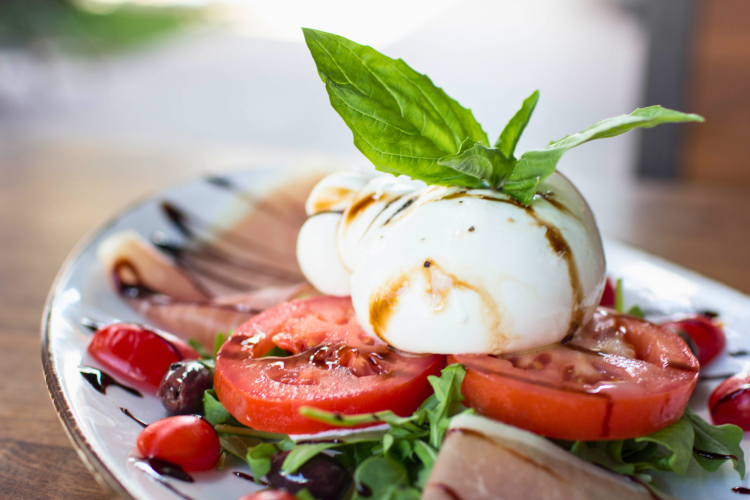
Burrata is a salty, creamy cheese that melts in your mouth and originally it comes from the region of Puglia, Italy. It has a firm outer casing and a soft buttery interior filled with cream and mozzarella curd. Ideally, it must be eaten fresh and can be enjoyed with toast, caprese salad and of course, burrata pizza.
12. Cheddar Cheese
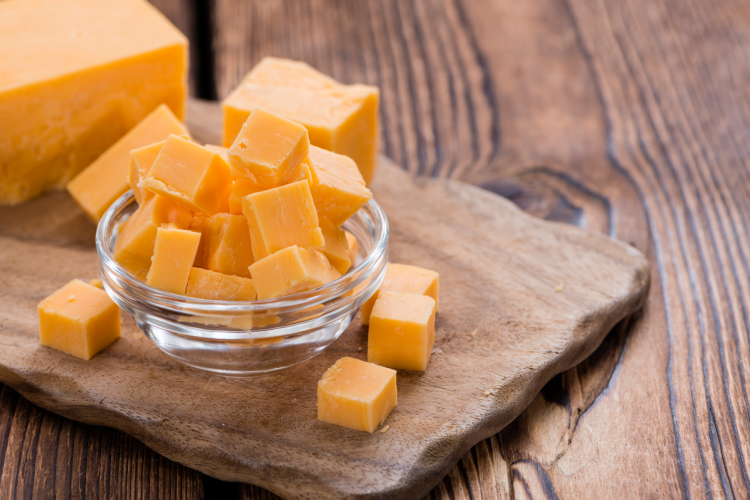
Cheddar is one of the most widely consumed cheeses in the world, and traditionally, authentic cheddar must be made within a 50-kilometer radius of Wells Cathedral in the Somerset region of southwest England. It’s quite a tart and dense cheese that goes well with almost anything; burgers, pizzas, mac and cheese — you name it.
13. Oaxaca Cheese
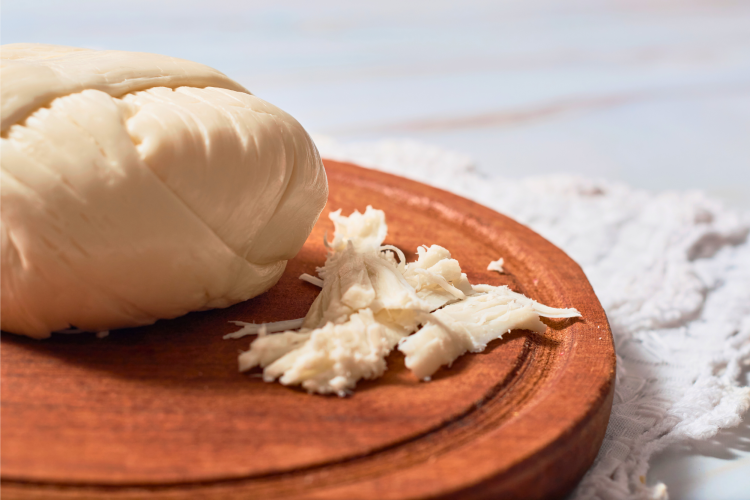
Also known as quesillo, Oaxaca cheese comes from the tiny village of Rojas de Quauhtemoc in the region of Oaxaca, Mexico. It’s a creamy string cheese that melts beautifully and goes great on quesadillas, casseroles and salads.
14. Swiss Cheese
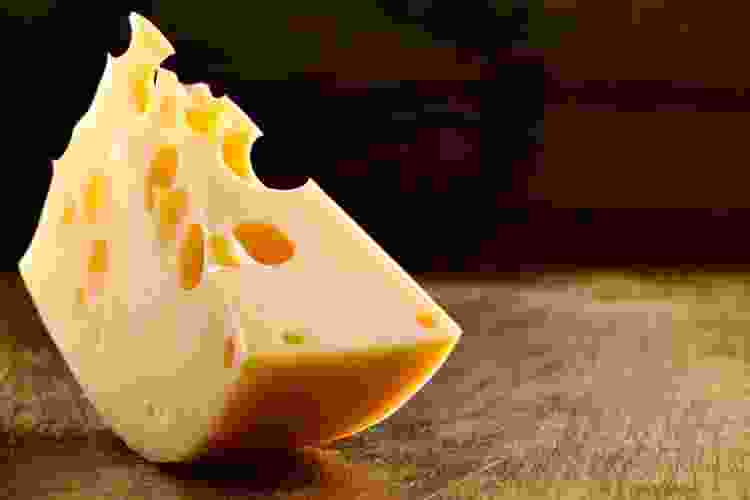
As the name implies, Swiss cheese is a traditional cheese from Switzerland that’s known for its light yellow color and characteristic holes. This cheese pairs nicely with fruits and vegetables and is a popular choice for sandwiches.
15. Gouda Cheese

Gouda cheese hails from the Netherlands and ranges from semi-hard to hard in texture with a smooth, mild flavor. Depending on how long it's aged, Gouda can take on richer, smokier notes, too. It's a favorite on cheese boards and is versatile in the kitchen: perfect for grating, slicing, cubing or melting.
16. Fontina Cheese
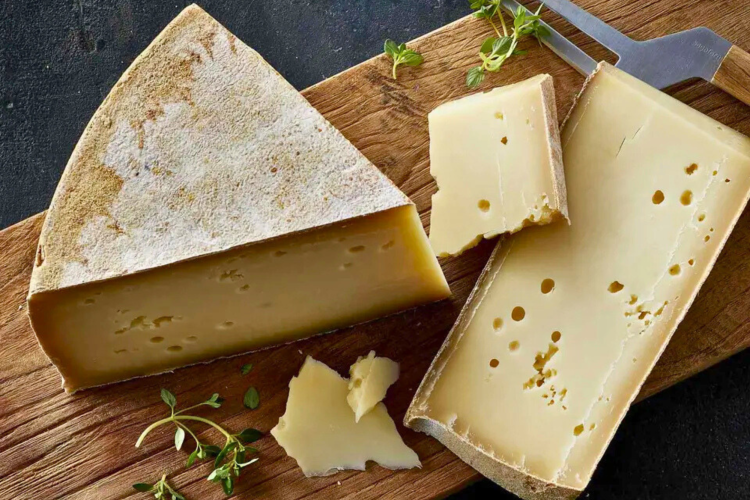
This cheese comes from the region of Valle d’Aosta, the north-west part of Italy. It’s a semi-dried cheese made with cow’s milk and it’s very delicate on the palate. It works best when served on its own in a charcuterie board alongside other types of cheese, cured meats and fresh fruits, but it can really be served with anything.
17. Goat Cheese
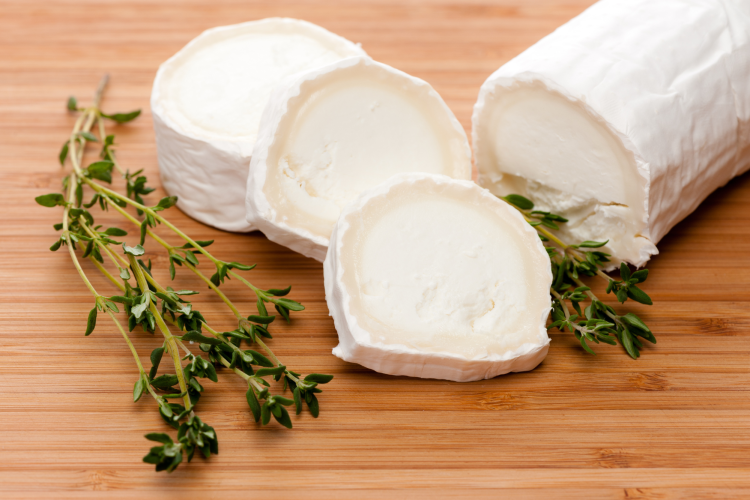
As the name implies, goat cheese is made from goat’s milk and comes from the Loire Valley in France. It’s available in a lot of different varieties with different textures, from mild and luscious Florette and Crottin to the harder, more intense Tomme de Chevre. You can put it in salads, spread it on crackers and even have it over pancakes with a drizzle of honey.
18. Havarti Cheese

Buttery Havarti is a Danish cheese with a very earthy, aromatic flavor and a semi-soft texture. It’s commonly aged for about three months and its mild, creamy taste pairs well with spicy foods or when melted on ravioli and panini sandwiches.
19. Mascarpone Cheese
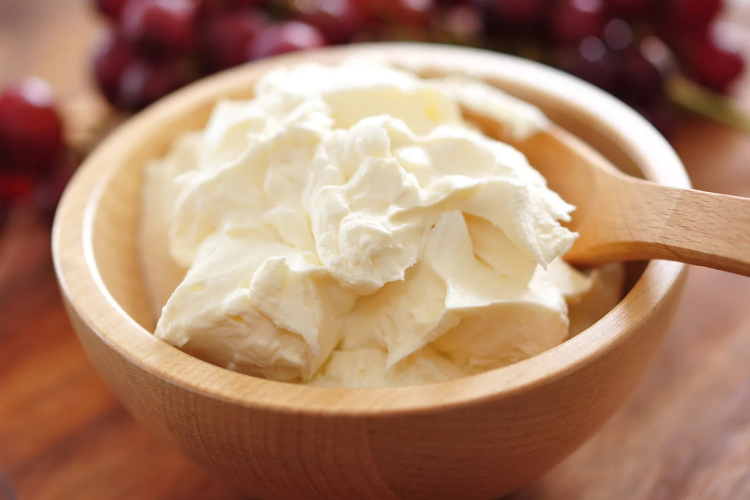
Mascarpone is a rich and creamy Italian cheese with a slightly sweet yet tangy flavor. It's made by adding acid to cream, which gives it a smooth, velvety texture. You’ll often find it in desserts like tiramisu, but it also works well in savory recipes.
20. Mozzarella Cheese

Mozzarella comes in two main types: one made from cow’s milk (called fior di latte), and one made from buffalo milk (buffalo mozzarella). The cow’s milk version is mild and slightly floral, while buffalo mozzarella is creamy and saltier with a richer flavor. Both types are best eaten fresh and when stored in water at room temperature, they’ll stay fresh for 3 to 4 days. If you don’t eat it fresh, don’t worry. It still melts beautifully in lasagna, pasta or on crusty bread.
21. Muenster Cheese
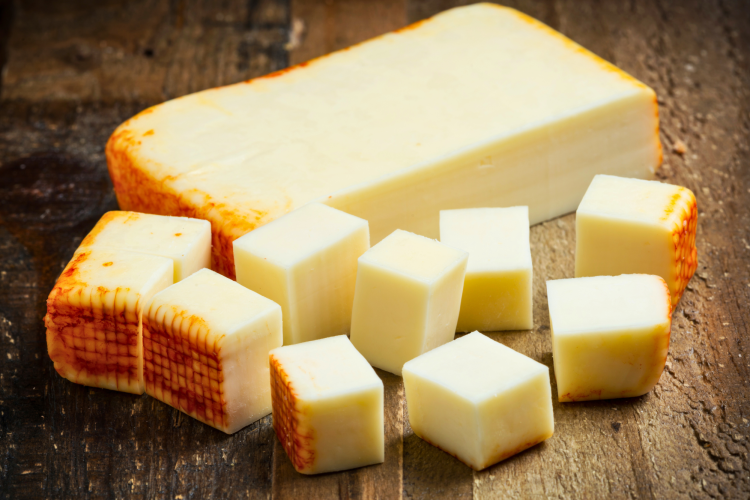
Although created in the U.S., semi-soft Muenster cheese was inspired by the traditional Munster cheese from France’s Alsace region. American muenster is known for how well it melts, making it great for hot dishes. But it’s also tasty cold: slice it for a ham sandwich, shred it over pizza instead of mozzarella or cut it into cubes for an easy cheese and cracker snack.
22. Asiago Cheese
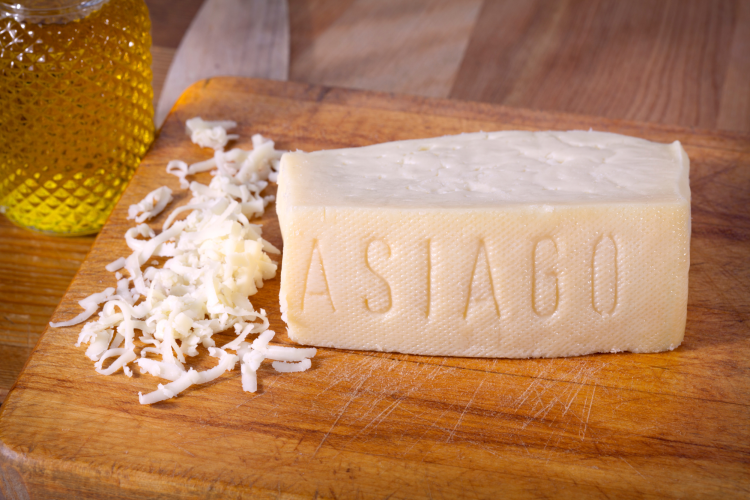
Asiago is named after the Italian town from which it originates. It has a nutty flavor and comes in fresh or aged varieties, which range from mild to strong, respectively. Depending on how old it is, Asiago can be grated, melted or sliced for different recipes.
23. Chihuahua Cheese
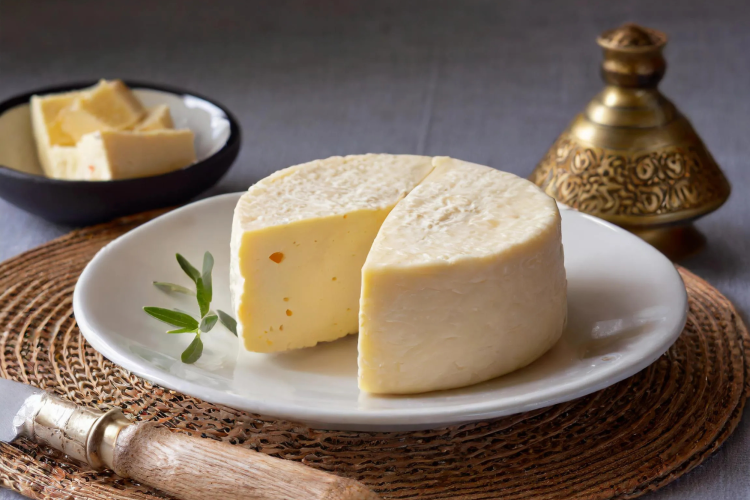
Queso Chihuahua is a soft, white and creamy cheese that comes in fun shapes like braids, balls or rounds. It comes from the Mexican state of Chihuahua and is made by stretching and kneading the curds, like mozzarella. This process gives it a smooth texture and great meltability. It’s ideal for melting into tacos, burritos, pizzas and casseroles.
24. Halloumi Cheese
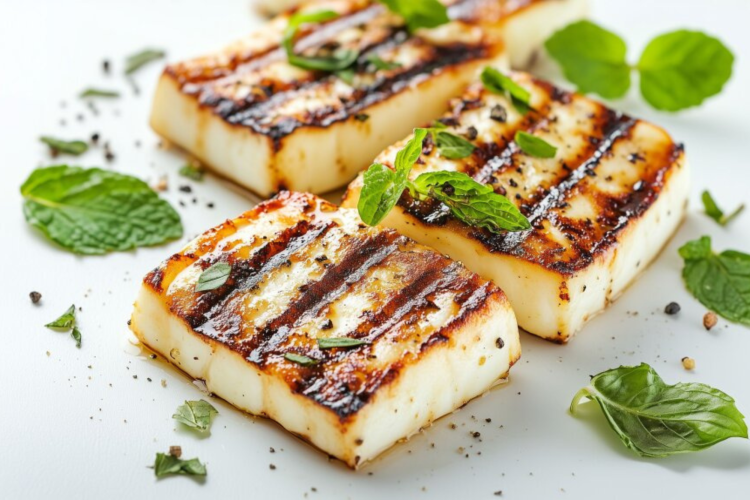
Hailing from the Mediterranean island of Cyprus, Halloumi is traditionally made from a mix of sheep and goat’s milk. It has a mild flavor with a slightly rubbery yet soft texture. Fresh halloumi is softer, while the aged version is firmer and more flavorful. It’s great grated over pasta, used in burgers, tossed into fruit salads or folded into an omelet.
25. Manchego Cheese
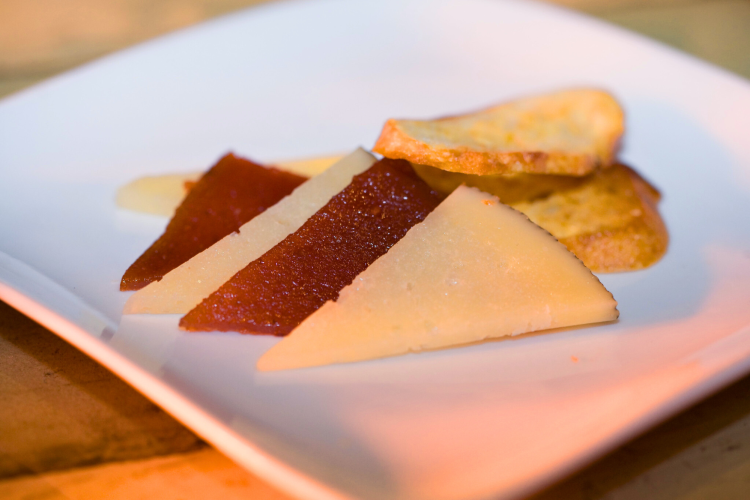
Traveling to La Mancha region in Spain, south of Madrid, you'll find the semi-hard cheese Manchego. It’s typically matured for two to six months and boasts a herbaceous aroma and nutty flavor with a tangy aftertaste. The longer it’s left to mature, the crumblier it becomes and it pairs well with almonds, cured meats like Spanish ham and crusty bread.
26. Monterey Jack Cheese

Monterey Jack (or just "Jack") is a semi-hard cheese that first came from Spanish missionaries in Monterey, California. Later on, a local businessman named David Jacks helped make it popular in the 1800s, which is how it got its name. Mild and creamy, it’s perfect as a snack or melted into your favorite main dish. If you’re looking for the right wine pairing, Monterey Jack goes especially well with a glass of Pinot Noir or Riesling. Whether you're putting together a wine and cheese board or browsing for thoughtful gifts for wine lovers, this cheese is a classic choice. It also makes a fun addition to any DIY night if you’re exploring wine glass painting ideas with friends. With its mild, melty, buttery texture that works well in sandwiches, casseroles, burgers and even sauces. It’s also great cubed up for snacks or as part of your charcuterie board ideas.
27. Pepper Jack Cheese

Pepper Jack is a spicy twist on Monterey Jack cheese. It's made by blending in peppers and sometimes other vegetables and spices for a bold flavor with a bit of heat. Even though it’s got some spice, it still has a creamy, buttery texture that makes it a favorite for breakfast dishes. Its smooth melt and zesty taste make it perfect for quesadillas, burgers and more.
28. Colby Jack Cheese

This buttery cheese is a marbling of Colby, which originates in Colby, Wisconsin and Jack cheese, which comes from Monterey, California. It’s a very soft cheese and because it melts so well, it works great in grilled cheese, quesadillas and tacos.
29. Neufchâtel Cheese

Neufchâtel cheese comes from the Normandy region of France and has been enjoyed since the Middle Ages. It has a soft, spreadable texture that makes it great for spreads, dips and cheesecakes. While it’s similar to cream cheese, Neufchâtel is a bit grainier and has a mild tang that brings a little extra flavor to your favorite recipes.
30. Raclette Cheese
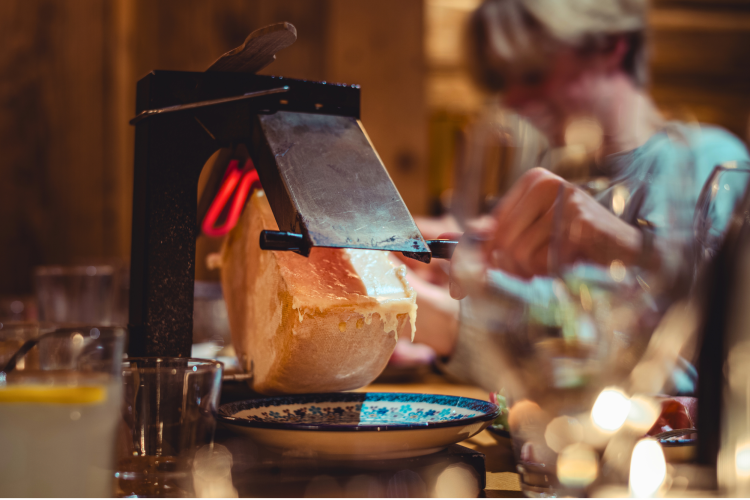
Getting its name from the French word racler, meaning “to scrape,” Raclette is a traditional Swiss cheese. It was originally melted by the fire and scraped over food. Today, it’s still enjoyed the same way, often served over potatoes, crusty bread, grilled vegetables or sausages.
31. Romano Cheese
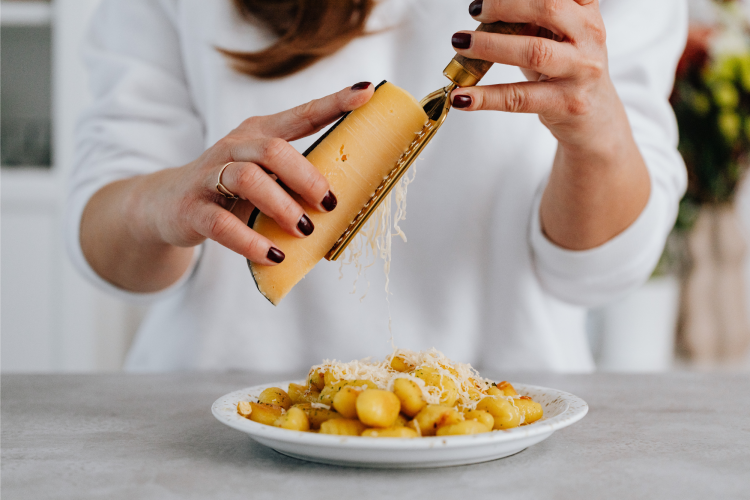
Romano cheese has roots in the Italian countryside, especially around Rome. When it’s made with cow’s milk, it has a firm texture and a sharp, salty bite that’s stronger than Parmesan. There’s also a version made with sheep’s milk that tends to be softer with tiny holes throughout. Aged Romano is great for grating over pasta, mixing into sauces or topping off salads.
32. Edam Cheese

Edam is a semi-hard cheese from the Netherlands, easy to spot thanks to its shiny red wax coating. It’s made mostly from cow’s milk and has a mild, nutty taste. As it ages, it firms up a bit, but still stays easy to slice or cube. Edam is great for cheese board ideas, sandwiches and salads. It also melts nicely, making it a good choice for casseroles and baked dishes.
33. Emmental Cheese

Emmental cheese is famous for its signature holes which form during the cheese-making process when bubbles get trapped as the curds are pressed. It’s named after the Emmental region of Bern, Switzerland and has a rich, milky and tasty flavor. However, the longer it’s aged, the nuttier and tangier it becomes. This cheese melts really well and pairs excellently with pasta, sandwiches and salads.
34. Gorgonzola Cheese

Produced in the Piedmont region of Italy, gorgonzola cheese has a centuries-old history. It’s made from pasteurized cow’s milk and boasts a beautiful marbled interior and signature blue veins. It can either be mild and creamy or hard and pungent, depending on how long it’s left to age. Enjoy it with spaghetti, on its own or alongside fresh fruit and a glass of wine.
35. Limburger Cheese

Known as the world’s stinkiest cheese (and not without cause), Limburger is a spreadable Belgian cheese and one of the few types of cheese that gets creamier and softer with time. Surprisingly, its flavor is quite mild and it's typically eaten with dark rye bread, brown mustard and onion.
36. Munster Cheese

This melty pale yellow cheese was originally made by Benedictine monks who migrated to the Alsace region of France. It’s characterized by a soft, smooth texture and a bright orange rind with a flavor profile that can range from very mild to a little stronger as it ages. Because it melts so easily, it’s great for hot sandwiches, burgers or scrambled eggs.
37. Pecorino Cheese

Pecorino cheese is made with sheep's milk and it’s very popular in Rome where it’s used to make dishes like cacio e pepe and carbonara. There are other regional versions too, like Pecorino Sardo from Sardinia, Pecorino Toscano from Tuscany, and Pecorino from Abruzzo. Each one has its own unique flavor, depending on where it's made and how long it’s aged. Younger pecorino tends to be softer and milder, while aged versions are firmer and sharper in taste.
38. Stilton Cheese

Considered the king of English cheeses, Stilton is a variety of blue cheese that can only be produced in the three English counties of Leicestershire, Nottinghamshire and Derbyshire. Stilton is a relatively young cheese best eaten between 12 and 14 weeks, and it has a creamy yet full-flavored taste. It’s lovely when melted over steak, in salad dressings, on grilled toast or even as an extra topping on pizza.
39. Colby Cheese

Buttery Colby cheese gets its name from the town of Colby, Wisconsin where it was created in the late 1800s. While it might look a lot like Cheddar, it's actually softer and has a milder flavor. Its melty texture makes it an ideal companion for comfort food dishes like grilled cheese sandwiches and creamy casseroles.
40. Jarlsberg Cheese

Jarlsberg is a semi-soft cheese from Norway, famous for its mild, nutty flavor and signature holes. Its creamy texture makes it a favorite in sandwiches and it melts beautifully in omelets, grilled cheese and quesadillas.
41. Mizithra Cheese

Mizithra is a soft cheese from the beautiful Greek island of Syros. It’s typically made from goat or sheep’s milk. Fresh Mizithra is delicious spread on bread or served with a generous drizzle of honey as a sweet breakfast or dessert.
42. Panela Cheese

Panela cheese, or queso panela, is a fresh cheese from Mexico made with pasteurized cow’s milk. What makes it special is that it holds its shape when grilled or fried, so it won’t melt into a gooey mess. It’s a popular ingredient in Mexican cooking and often used in tacos, quesadillas and enchiladas. But, it’s also great crumbled over salads for a light, creamy touch.
43. Provel Cheese

Provel cheese is a St. Louis staple that was created to melt without being stringy. It’s a combination of Swiss, cheddar and provolone with a creamy, silky texture with a smoked flavor. It’s perfect for pizza, sandwiches and and pasta dishes.
44. Roquefort Cheese

Roquefort-sur-Soulzon, a small village in the Occitanie region of France, is famous for being the birthplace of Roquefort cheese. Roquefort is a creamy, slightly moist white cheese with a tangy taste and distinctive blue mold running through it. Depending on how long it’s aged, it gets stinkier, sharper, and saltier with time, and it goes beautifully with omelets and baked potatoes, as well as sweet pairings like figs and cashew wine.
45. Asadero Cheese

Asadero is a mild, semi-soft cheese from northern Mexico made from a mix of cow and goat milk. Its fresh, tangy flavor is similar to mozzarella, which makes it perfect for melting. It's a go-to for quesadillas but also works great in nachos, burgers, enchiladas and sandwiches.
46. Dubliner Cheese

Dubliner is a flavorful aged cheese from Ireland made with cow's milk. It has a bold mix of nutty, sharp and slightly sweet notes. It melts beautifully, making it a tasty choice for grilled cheese, burgers, mac and cheese, and hearty sandwiches.
47. Fontinella Cheese

Fontinella is a cow’s milk cheese made in North America, not to be confused with Italy’s creamy Fontina. It's been around for about 100 years and offers a sweet, creamy texture with a slight sharpness. Fontinella also melts easily, making it a great choice for casseroles, sauces and grilled cheese sandwiches.
48. Kasseri Cheese

Kasseri is a firm, pale yellow cheese made mostly from sheep’s milk with a bit of goat’s milk. It's traditionally made in specific parts of Greece and has a mild, buttery flavor. Kasseri melts well, so it’s ideal for hot dishes like pizzas, grilled cheese and casseroles.
49. Paneer Cheese

Paneer is a fresh cheese from India made by curdling cow or buffalo milk with lemon juice or vinegar. Unlike many other types of cheese, paneer doesn't melt when heated. However, its mild taste soaks up spices well, making it perfect for curries, stir-fries and grilled dishes.
50. Camembert Cheese

Sweet and creamy Camembert is a classic French cheese made exclusively in Normandy. It’s a soft cheese with a flowery rind and a gooey center. At room temperature, Camembert is spreadable and is best enjoyed on a warm baguette with some cider.
51. Bocconcini Cheese

Bocconcini are small, pearl-sized balls of fresh mozzarella cheese that live up to their Italian name, which means "little mouthfuls." They're soft, mild, and perfect for tossing into salads or pairing with fresh basil and tomato.
Types of Cheese FAQs
How Many Types of Cheese Are There? Are There Really 2,000 Types of Cheese?
Believe it or not, there are around 2,000 types of cheese in the world. This number represents broader categories like blue, soft, hard, soft-ripened, pasta filata and processed varieties, with countless local variations within each group.
Which Country Has 246 Varieties of Cheese?
That would be France. Former president Charles de Gaulle once joked, “How can you govern a country with 246 varieties of cheese?”
Not only is cheese one of the best gifts for foodies, but it comes in thousands of varieties, each with its own unique flavor, texture and history. These cheeses are just a few delicious examples among the many types of cheese in the world and beyond. Some are great to snack on, others melt beautifully and some are downright indulgent.
For even more fun ideas for foodies (including cooking with cheese!), check out other experiences happening on Classpop!

